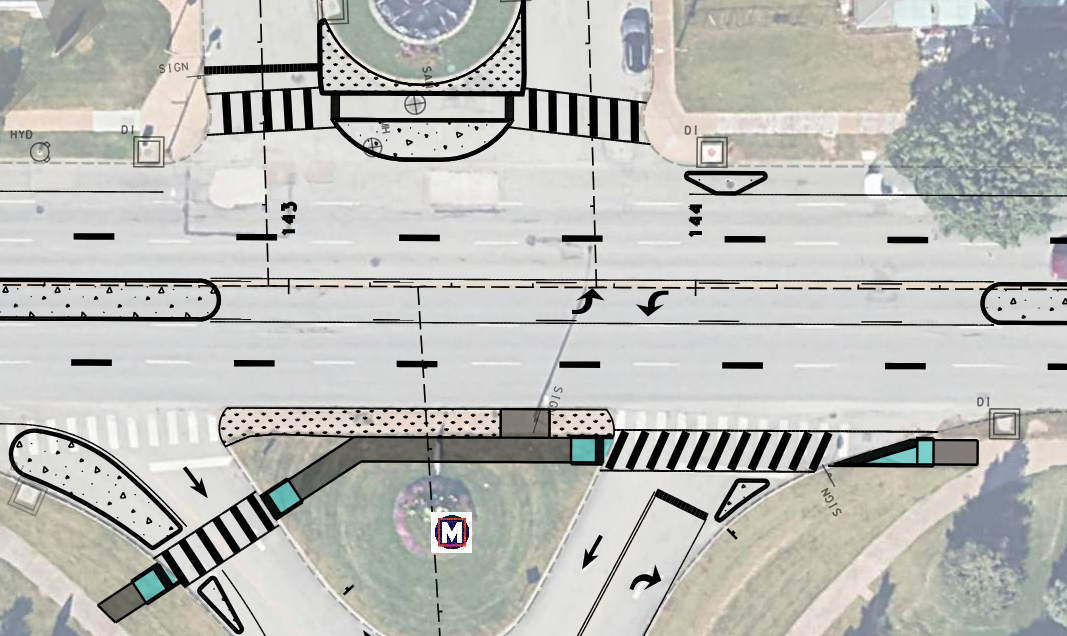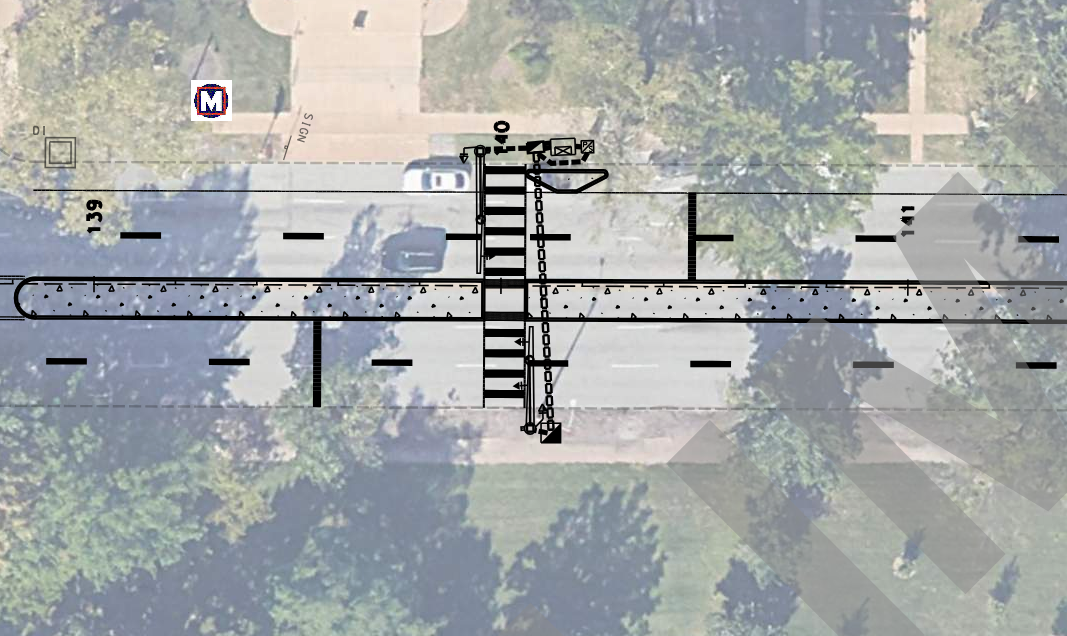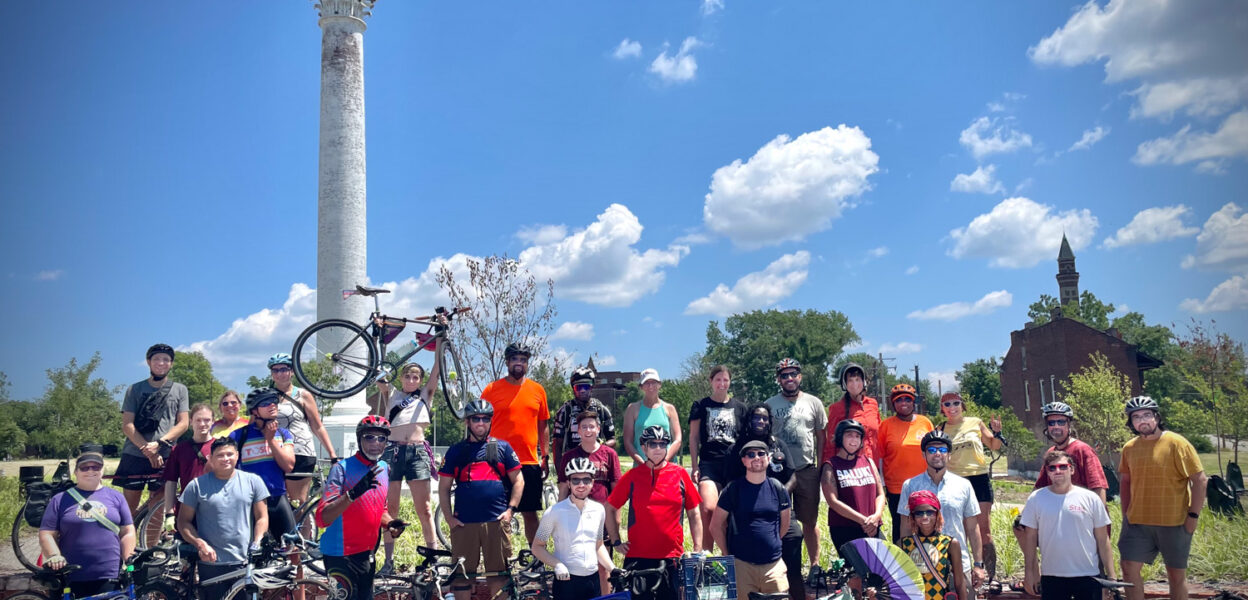By Matt Wyczalkowski and Christian Frommelt
This is a pivotal time to advocate for bicycle and pedestrian safety in St. Louis. As car crashes and dangerous roads imperil us and divide neighborhoods, the City will spend hundreds of millions over the next three years to address traffic violence. The $46M Principal Arterial Traffic Safety program, funded by the American Rescue Plan Act, aims to calm traffic and improve safety for cyclists, pedestrians, and transit riders on 30 miles of the most dangerous arterial roads and intersections in St. Louis. As part of this effort, throughout summer and fall of 2024 the City held open houses and presented plans for significant enhancements along Kingshighway, Grand, Jefferson, Union, and Goodfellow Boulevards.

The St. Louis Coalition to Protect Cyclists and Pedestrians (CP2) formed in the spring of 2024 to advocate for the safety of people who travel outside of cars (Instagram: @stlcp2). Our first action targeted newly released plans for Kingshighway, which did nothing to address the appalling lack of protection for pedestrians crossing a busy six-lane road into historic Tower Grove Park. We petitioned the City to reduce the number of traffic lanes, install a median, and provide a crosswalk for crossing into the Park. Within two weeks over 600 people signed in person and online, vividly demonstrating how important street safety is to residents. Gathering media attention along the way, we delivered our petition to City Hall by bicycle, and within a few weeks the City agreed to implement all our requests. We recognized then that the time was right to push much more broadly for bicycle and pedestrian safety improvements throughout the City.

The City continued to release plans for high-traffic corridors; tapping into an existing activist urbanist culture and the weekly ritual of social rides, we organized bike rides and walks to scrutinize the plans firsthand. Participants included neighbors and parents, transit and disability advocates, and officials from City government and transit agencies. On our Grand Boulevard Bike Bus, 30 people rode 9 miles from Carondelet Park to the Grand Avenue Water Tower and back. 40 people joined us for a 2.5-mile Jefferson Avenue Walk from Chippewa to Chouteau followed by a Metrobus ride back. And a dozen riders participated in a 16-mile Union and Goodfellow Boulevard Bike Bus ride through North St. Louis. In conversations during and after the events, consensus formed based on observations, analysis of plans, and our lived experience. We identified a number of specific opportunities for improvement and documented alarming flaws; we also let our imaginations run wild towards safer, more equitable, more pleasurable thoroughfares. The media took an interest in our actions, and we developed the tradition of presenting our recommendation letters to City Hall on regular Friday Bike Bus bicycle rides. Such sustained in-person gatherings are essential, we found, in spurring incremental change that aspires to transform.
Certain issues came up again and again, including the need for better protection for bike lanes, reduced car lane widths, and proper maintenance of infrastructure once it is built. Medians and curb bump-outs in particular were assessed as especially helpful for both pedestrians and cyclists, reducing traffic speeds and making crossing a busy street much easier. Connectivity of the bicycle network is likewise of utmost importance – for instance, a safe connection via Grand to the Metrolink station, or a protected bike lane north of Delmar to link Forest Park to the future Hodiamont Greenway. Being able to get from A to B safely and efficiently is critical for cycling to function as a practical and legitimate form of transport, and not merely a leisure activity.
By gathering in person, speaking from the perspective of vulnerable road users, specifying concrete achievable improvements, and demonstrating that there is broad support for true road safety, CP2 has worked to fortify the political will to prioritize safe streets. As evidence of the effectiveness of these actions, Mayor Tishuara Jones organized her own group rides to experience planned projects from a cyclist’s perspective. There appears to be a genuine effort amongst some city staff and elected officials, a number of whom bike to work, to change our dangerous status quo. We learned that the City depends on grassroots advocates who know the streets intimately––especially outside of cars––to forge new directions towards safety.
The new year presents ongoing challenges. Car-centric infrastructure continues to inflict harm and exacerbate inequities along the lines of class, race, and ability. After decades of disinvestment and population loss, St. Louis faces an upward climb to make good on the promise of safety and maintenance of our streets. Yet we hold both an awareness of these problems and the firm belief that every mother deserves to walk safely to the park, and a child to ride a bicycle to a neighbor’s house. We see such challenges as opportunities to make meaningful improvements. Together with organizations including Paraquad, Transform STL, Trailnet, Urbanists, and others, CP2 is working to shift culture in St. Louis, to normalize getting around outside of a car, and to demonstrate that the perspective of those who ride, walk, or use a wheelchair is vital to making our city an attractive and compelling place to be.

